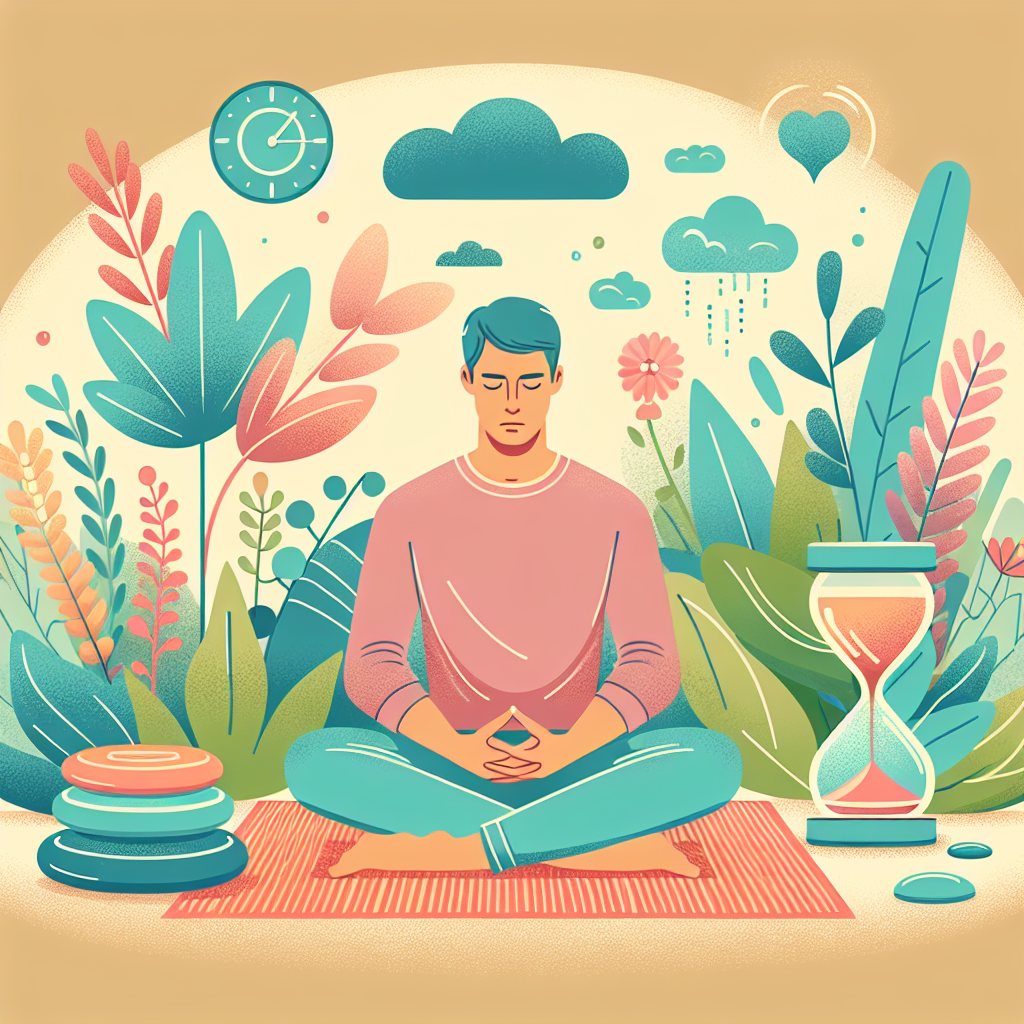So you’ve heard about the amazing benefits of meditation and you’re ready to give it a try. But where do you begin? Starting a meditation practice can feel overwhelming at first, but fear not, because in this article, you’ll discover the perfect starting point for beginners like yourself. Whether you’re seeking stress relief, mental clarity, or inner peace, this guide will show you how to take those first steps towards incorporating meditation into your daily routine. With simple techniques and helpful tips, you’ll be well on your way to experiencing the transformative power of meditation.
Choosing a Meditation Practice
Understanding Different Meditation Techniques
When starting your meditation journey, it’s important to understand that there are various meditation techniques available, each with its own unique focus and approach. Some common meditation techniques include mindfulness meditation, loving-kindness meditation, transcendental meditation, and body scan meditation. Take your time to research and explore the different techniques to find one that resonates with you.
Exploring Different Types of Meditation
Meditation is not a one-size-fits-all practice. Different types of meditation cater to different needs and preferences. Mindfulness meditation, for example, focuses on cultivating awareness of the present moment, while loving-kindness meditation emphasizes compassion and kindness towards oneself and others. Body scan meditation involves systematically scanning the body for sensations, while transcendental meditation uses a mantra or repeated word or phrase to quiet the mind. Consider trying out different types of meditation to see which one aligns best with your goals and interests.
Selecting the Right Practice for You
Selecting the right meditation practice for you can greatly enhance your overall experience and progress. Consider your goals, preferences, and what resonates with you on a personal level. Reflect on whether you want to develop mindfulness, cultivate compassion, reduce stress, or achieve spiritual growth. Trust your intuition and choose a practice that feels natural and enjoyable to you. Remember, there is no right or wrong meditation practice – it’s about finding what works best for you.
Establishing a Meditative Space
Finding a Quiet and Comfortable Space
When embarking on a meditation journey, finding a quiet and comfortable space is essential. Look for a space where you can minimize distractions and interruptions. It can be a dedicated room or simply a corner of a quiet room in your home. Ensure that it is a space where you feel calm and at ease. Consider adding elements like cushions, blankets, or a meditation chair for extra comfort during your practice.
Creating a Calming Environment
Creating a calming environment in your meditation space can greatly support your practice. Choose soft and soothing colors for the room, such as earth tones or pastel shades. Add natural elements like plants or a small indoor fountain to bring a sense of tranquility. Dim or soft lighting can also contribute to a peaceful ambiance. Consider playing gentle instrumental music or nature sounds to further enhance the calming atmosphere.
Gathering Meditation Supplies
While meditation can be practiced without any specific supplies, having a few essential items can enhance your experience. Consider gathering cushions or pillows to provide support and ensure comfort during seated meditation. A meditation shawl or blanket can help keep you warm during longer sessions. If you prefer guided meditations, consider having a meditation app or a collection of meditation recordings readily available. Experiment with different supplies to determine what aids your practice the most.

Preparing for Meditation
Setting Aside Time for Meditation
To fully experience the benefits of meditation, it’s important to set aside dedicated time in your daily routine. Allocate a specific time slot for your practice, ideally when you are less likely to be interrupted. Consider integrating meditation into your morning or evening routine to create a consistent habit. Start with shorter sessions, such as five to ten minutes, and gradually increase the duration as you feel more comfortable and confident in your practice.
Choosing a Consistent Schedule
Consistency plays a vital role in meditation. Selecting a consistent schedule helps train your mind and body to enter a state of calm more readily and effectively. Experiment with different times of the day to find what works best for you. Some individuals find that meditating early in the morning helps set a positive tone for the rest of the day, while others prefer to unwind with meditation in the evening. Choose a schedule that aligns with your lifestyle and commitments.
Wearing Comfortable Clothing
Creating a comfortable physical environment for meditation includes wearing clothing that allows freedom of movement and promotes relaxation. Choose loose-fitting clothes made of breathable fabrics that do not restrict your body or cause discomfort. Opt for layers, as you may want to adjust your clothing to accommodate temperature changes during longer meditation sessions. Prioritize comfort over style to fully immerse yourself in the meditative experience.
Posture and Positioning
Sitting Meditation Postures
One of the most common meditation postures is the cross-legged position, known as the lotus or half-lotus pose. However, this posture may not be suitable or comfortable for everyone, especially beginners. Alternatively, you can sit on a meditation cushion, bolster, or chair with your back straight and unsupported. The key is to maintain a position that allows you to feel both alert and relaxed. Experiment with different sitting postures to find the one that aligns with your body and promotes stability.
Lying Meditation Postures
For those who struggle with sitting meditation due to physical limitations or discomfort, lying down meditation postures can be an excellent alternative. Choose a firm yet comfortable surface, such as a yoga mat or firm mattress. Lie on your back with your legs slightly apart and arms relaxed by your sides. Use a pillow or bolster under your knees if needed. Although lying down may increase the tendency to fall asleep, it can be a suitable position for deep relaxation or body-focused meditations.
Using Props for Support
Props can be valuable tools in finding comfort and stability during meditation. If sitting on the floor is uncomfortable, use a meditation cushion or bolster to elevate your hips and bring your knees closer to the ground. This helps maintain a more stable and aligned posture. If needed, use blankets or folded towels to support your knees, lower back, or any other body areas that require additional cushioning. Props can assist in finding a relaxed and balanced position that enhances your meditation experience.

Breathing Techniques for Beginners
Deep Breathing
Deep breathing is a fundamental breathing technique in meditation. Start by sitting comfortably, allowing your body to relax. Take a deep breath in through your nose, feeling your abdomen expand. Slowly exhale through your mouth, allowing your body to release any tension or stress. Repeat this deep breathing pattern, focusing your attention on the sensation of your breath entering and leaving your body. Deep breathing helps calm the mind, reduce anxiety, and increase overall relaxation.
Counting Breath
Counting breath is a simple yet effective technique to anchor the mind and cultivate focus during meditation. Find a comfortable sitting or lying position and begin by taking a few deep breaths. As you inhale, silently count “one” in your mind, and as you exhale, count “two.” Continue this pattern, counting up to ten breaths. If your mind wanders, gently bring your focus back to the breath and restart the count from one. Counting breath helps develop concentration and brings the mind to the present moment.
Alternate Nostril Breathing
Alternate nostril breathing is a pranayama technique that helps balance the flow of energy in the body and harmonize the mind. Sit comfortably and use your right thumb to close your right nostril. Inhale deeply through your left nostril, then use your right ring finger or pinky finger to close your left nostril as you exhale through your right nostril. Inhale through your right nostril, close it with your thumb again, and exhale through your left nostril. This completes one round. Alternate nostril breathing calms the mind, improves focus, and promotes a sense of balance and harmony.
Focusing the Mind
Single-Pointed Attention
Single-pointed attention is the practice of directing and sustaining your focus on a chosen meditation object, such as the breath, a mantra, or a visualized image. Start by selecting an object of focus that resonates with you. As you begin your meditation, bring your attention to the chosen object and make a conscious effort to sustain your focus on it. Whenever your mind wanders, gently guide it back to the chosen object without judgment or frustration. Single-pointed attention helps cultivate concentration and stillness of the mind.
Mantra or Chanting Meditation
Mantra or chanting meditation involves repeating a word, phrase, or sound silently or aloud to assist in redirecting your thoughts and focusing the mind. Choose a mantra or chant that holds personal significance or uses traditional mantras such as “Om” or “So Hum.” Close your eyes, sit comfortably, and start repeating the mantra either internally or aloud. As you repeat the mantra, allow the vibrations and rhythm of the words to calm your mind and deepen your focus. Mantra or chanting meditation promotes mental clarity, inner peace, and a heightened sense of spiritual connection.
Guided Visualization
Guided visualization is a meditation technique that uses visualization and imagination to create a calming and positive mental experience. Find a guided visualization recording or follow a guided meditation app that guides your imagination through various peaceful scenarios, such as a serene beach or a lush forest. As you listen, visualize the details of the scene and immerse yourself in the sensory experience. Guided visualization helps relax the mind, unlock creativity, and cultivate a sense of inner tranquility.
Dealing with Distractions
Acknowledging and Letting Go
Distractions are common during meditation, and it’s important not to get discouraged or frustrated when they arise. Instead, acknowledge distractions with a non-judgmental attitude, recognizing that they are a natural part of the meditation process. Allow distractions to come and go without attaching any judgment or significance to them. Whenever you notice your mind wandering, gently let go of the distraction and redirect your focus back to the present moment and the meditation object.
Using Anchors to Stay Present
Anchors are objects or sensations that help anchor your attention to the present moment. Examples of anchors include the sensation of your breath, the feeling of your body against the meditation cushion, or the sound of a gentle bell. Whenever you find your mind wandering or getting caught up in thoughts, bring your attention back to the anchor. By consistently redirecting your focus to the anchor, you can prevent distractions from pulling you away from the present moment.
Gently Returning to the Meditation Object
It is natural for the mind to wander during meditation, and when it does, gently returning to the meditation object is key. Whether your mind wanders for a few seconds or several minutes, avoid criticizing yourself or becoming frustrated. Instead, gently acknowledge the wandering thoughts and bring your attention back to the chosen meditation object, such as the breath or mantra. Cultivate a compassionate and patient attitude toward yourself as you continue on your meditation journey.
Progressing in Meditation
Gradually Extending Meditation Time
As your meditation practice develops and becomes more comfortable, consider gradually extending the duration of your meditation sessions. Start by adding a few extra minutes to your practice every few days or weekly. Over time, you can work your way up to longer meditation sessions, such as 20, 30, or even 60 minutes. By gradually increasing the time, you allow your mind and body to adapt and build resilience, enabling you to delve deeper into the meditative state and experience enhanced benefits.
Exploring Advanced Techniques
Once you have established a consistent meditation practice, you may feel ready to explore advanced meditation techniques. Advanced techniques often involve deeper levels of concentration, visualization, or insight. Examples of advanced techniques include vipassana meditation, loving-kindness meditation, or transcendental meditation. It’s essential to approach advanced techniques with an open mind and a willingness to expand your practice. Remember that progress in meditation is a personal journey and that there is always something new to learn and discover.
Seeking Guidance from Experienced Meditators
Seeking guidance from experienced meditators can provide valuable insights and support in your meditation journey. Consider reaching out to local meditation centers or spiritual communities to connect with experienced practitioners or meditation teachers. They can offer guidance, answer your questions, and provide a sense of community and connection. Participating in meditation retreats or workshops led by experienced teachers can also deepen your practice and provide an opportunity for growth.
Maintaining Consistency
Setting Realistic Goals
Maintaining consistency in your meditation practice is essential for long-term benefits. Set realistic goals that suit your lifestyle and commitments. It’s better to meditate for a shorter duration consistently than to attempt longer sessions sporadically. Start with a manageable goal, such as meditating for five minutes every day, and gradually increase the duration over time. By setting achievable goals, you build a strong foundation for continued practice and ensure that meditation becomes an integral part of your life.
Building a Meditation Routine
Building a meditation routine involves establishing a consistent time and place for your practice. Choose a time of day when you are least likely to face distractions and interruptions. Find a designated space in your home or create a personal altar that symbolizes your meditation practice. By creating a routine, you develop a sense of discipline and make meditation a non-negotiable part of your daily life. Consistency in your routine strengthens the benefits of meditation and reinforces its positive impact.
Fostering a Mindful Lifestyle
Meditation is not limited to the time spent in formal practice; it extends into everyday life. Fostering a mindful lifestyle means bringing the qualities of presence and awareness into your daily activities. Practice mindfulness while eating, walking, or engaging in conversations with others. Incorporate moments of pause and deep breathing throughout your day as a reminder to stay centered and connected to the present moment. By infusing mindfulness into your lifestyle, you enhance the benefits of meditation and experience greater peace and fulfillment.
Seeking Support and Community
Joining Meditation Groups or Classes
Joining meditation groups or classes can provide a supportive and nurturing environment for your practice. Search for local meditation groups or centers in your area and consider attending group meditation sessions. Being part of a community of like-minded individuals who share similar interests can foster a sense of belonging and accountability. Group meditations offer a unique opportunity to learn from experienced practitioners, exchange insights, and deepen your understanding of meditation.
Mentoring or Finding a Meditation Teacher
Having a mentor or finding a meditation teacher can greatly enhance your meditation journey. Seek out experienced teachers who resonate with your meditation goals and values. A meditation teacher can provide personalized guidance, offer techniques tailored to your specific needs, and help navigate any challenges or obstacles that arise along the way. Mentoring or finding a teacher allows for a deeper level of engagement and growth in your practice, fostering a strong relationship built on trust and support.
Using Meditation Apps and Online Resources
In the digital age, meditation apps and online resources are readily available, making meditation accessible to everyone. Explore popular meditation apps that offer guided meditations, timers, and tracks to support your practice. Websites and online platforms also provide a wealth of information, articles, and forums where you can connect with the broader meditation community. Utilizing these resources ensures that you have a vast array of tools and support at your fingertips to enhance your meditation practice.
Embarking on a meditation journey is a personal and transformative experience. Remember to be patient, compassionate, and open-minded as you explore different meditation techniques, establish a meditative space, and develop a consistent practice. Embrace the moments of stillness and present-moment awareness that meditation offers, allowing them to seep into every aspect of your life. With commitment and dedication, meditation can become a powerful tool for self-discovery, inner peace, and overall well-being. So, take a deep breath, find your meditation practice, and enjoy the beautiful journey of self-exploration and growth.
